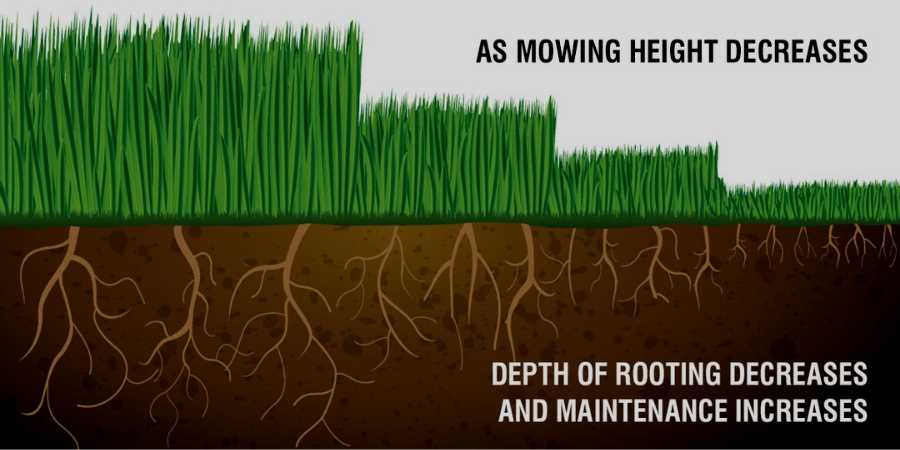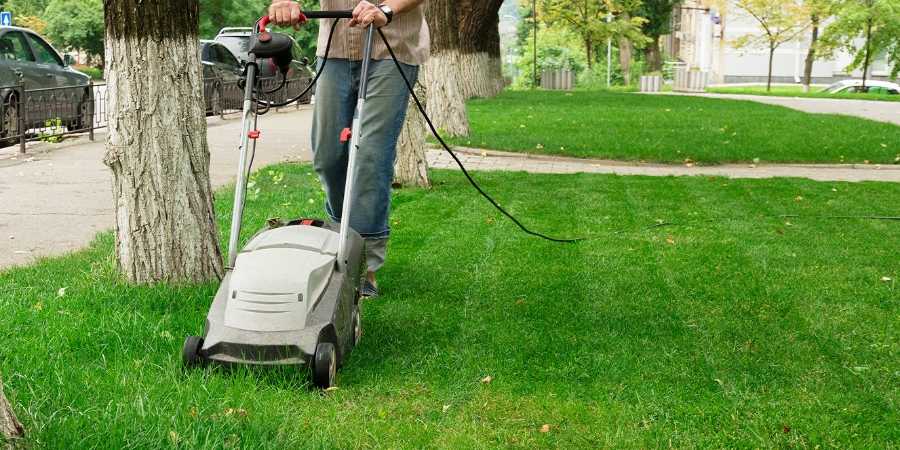Grow A Green and More Environmentally Friendly Lawn
- horticulturist and gardening expertMarch 16, 2019
You can have your grass and be kind to the environment too. It’s just a matter of changing your lawn care practices. Proper mowing, watering, and fertilization can be the difference between a healthy lawn and a weed patch. Raise the mowing height of your lawnmower, if haven’t already done so. Grow cool season grasses like bluegrass, fescue and ryegrass 2-1/2 to 3-1/2 inches tall. Warm season grasses like bermudagrass, carpetgrass, centipedegrass and zoysia should be grown at 1 to 2 inches tall, while St. Augustine should a bit higher, 2 to 3 inches, for best results. Taller grass is better able to compete with weeds.

Mow often, removing no more than one third the total height, in order to reduce stress on the grass. Leave the clippings on the lawn for additional nutrients. A season’s worth of clippings equals one fertilizer application. And make sure the blade is sharp for a better look and quicker recovery of the grass. Rather than a gas mower, consider using a push or electric mower. It’s good for the waistline and the environment.
Proper watering helps keep your lawn healthy and better able to fend off pests and out compete the weeds. But recent droughts, increased water rates, and efforts to conserve water may mean a change of habit. Allow your lawn to go dormant during drought. Minimize foot traffic and play on dormant lawns. Don’t apply herbicides or fertilizer to dormant lawns. The fertilizer will feed the weeds and both can damage the dormant grass.
Those starting a new lawn may want to select a more drought tolerant grass suited to their climate. Rhizomatous (turf-type) tall fescue uses less water and needs less fertilizer than traditional lawn grasses. The native buffalo grass is a more drought tolerant slow growing warm season grass. It is slow to germinate and establishes and thrives in hot weather. And those with very limited annual rainfall should consider drought tolerant native groundcovers and plantings.
Before fertilizing always start with a soil test so you apply the right type and amount of fertilizer for your lawn. Use a low nitrogen slow release fertilizer like Milorganite. This organic nitrogen fertilizer is only available to the lawn when needed and won’t damage your lawn when hot dry weather arrives. Proper fertilization will keep your grass healthy, green and better able to out compete weeds, tolerate drought and will be less susceptible to insects and diseases.
Boost your lawn’s long-lasting, deep, vibrant green lawn with iron. Grass needs iron for the long-lasting, deep, vibrant green lawn many of us desire. Milorganite delivers organically complex iron that is available to plants throughout the feeding period and won't stain concrete, unlike iron salts in some synthetic fertilizers.
Always sweep grass clippings and fertilizer residue off your walks and drives, creating a more sustainable lawn care practice. This simple step keeps unwanted nutrients out of our waterways and eventually drinking water.
With just a few simple changes to your lawn care practices, you can have a more environmentally friendly lawn that is thick, green, and healthy. You’ll appreciate the beauty a healthy lawn adds to your landscape while enjoying more time for all your outdoor activities.

